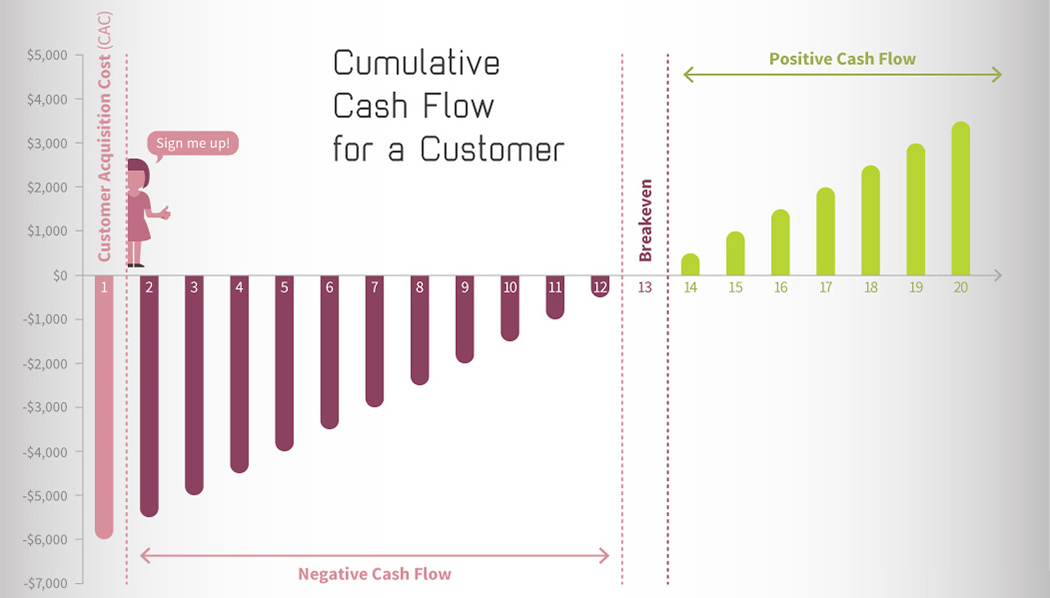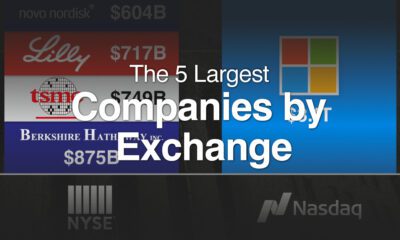Technology
Why Tech Investors Love the SaaS Model

Why Tech Investors Love the SaaS Business Model
Investors love businesses that have a reputation for minting cash.
And as far as tech companies go, the Software as a Service (SaaS) model is as good as it gets. It provides predictable, quantifiable, and fast-growing revenue for any company that can execute correctly – and everyone from venture capitalists (like Marc Andreessen) to asset managers (like Blackrock) love investing in companies with these traits.
Today’s infographic from TIMIA Capital explains why this is the case.
What is SaaS?
Unlike in years past when software was bought in a physical form at a store, much of today’s software runs right off the cloud.
This is made possible by ubiquitous broadband access and powerful computers – and SaaS allows users to consume software in a different way:
- Customers connect to the software online
- Customers are charged on an ongoing subscription basis for access
- The latest version of the software is automatically provided to the user
SaaS has immeasurable benefits over traditional software distribution models.
- It can be used everywhere, including on mobile
- It has easy integration with plug-ins or add-ons
- There is no overhead, packaging, or distribution costs
- It limits piracy
- It has a flexible and clear licensing model
- Software is always up-to-date
- User data can be collected and new features can be tested easily
While the benefits of SaaS to the end user are plenty, it has even more interesting properties as an investment.
SaaS Economics
Instead of relying on one-time transactions or upfront fees, SaaS is built around smaller, subscription-based transactions that recur each month or year.
Recurring revenue makes SaaS extremely predictable, measurable, and built to scale.
Unlike some other types of startups, measuring performance in SaaS is heavily focused on growing important metrics like LTV (lifetime value) or MRR (monthly recurring revenue), while minimizing CAC (customer acquisition costs) and churn (the rate at which customers stop buying the product).
As a result of the inherent attributes of the SaaS model, the industry has been exploding with growth. The BVP Cloud Index, which tracks 56 publicly traded cloud companies, is up 396% since 2011. That easily beats out benchmarks like the Nasdaq, S&P 500, and DJIA by triple digits.
Other Reasons to Love SaaS
Aside from performance, here are a few last reasons that elite investors love SaaS:
Costs go down: As SaaS businesses scale, the cost of servicing each customer goes down. In the long run, this helps lead to a growing, predictable cash flow.
Buyouts: It’s common for SaaS businesses to get gobbled up by the bigger fish in the pond, which often offers investors a premium on the current stock price.
Low Barriers: The SaaS model has erased barriers to entry for software, allowing new entrepreneurs to enter the fold in almost every niche possible. This creates a wide array of new opportunities for investors, as well.
Technology
Ranked: Semiconductor Companies by Industry Revenue Share
Nvidia is coming for Intel’s crown. Samsung is losing ground. AI is transforming the space. We break down revenue for semiconductor companies.
Semiconductor Companies by Industry Revenue Share
This was originally posted on our Voronoi app. Download the app for free on Apple or Android and discover incredible data-driven charts from a variety of trusted sources.
Did you know that some computer chips are now retailing for the price of a new BMW?
As computers invade nearly every sphere of life, so too have the chips that power them, raising the revenues of the businesses dedicated to designing them.
But how did various chipmakers measure against each other last year?
We rank the biggest semiconductor companies by their percentage share of the industry’s revenues in 2023, using data from Omdia research.
Which Chip Company Made the Most Money in 2023?
Market leader and industry-defining veteran Intel still holds the crown for the most revenue in the sector, crossing $50 billion in 2023, or 10% of the broader industry’s topline.
All is not well at Intel, however, with the company’s stock price down over 20% year-to-date after it revealed billion-dollar losses in its foundry business.
| Rank | Company | 2023 Revenue | % of Industry Revenue |
|---|---|---|---|
| 1 | Intel | $51B | 9.4% |
| 2 | NVIDIA | $49B | 9.0% |
| 3 | Samsung Electronics | $44B | 8.1% |
| 4 | Qualcomm | $31B | 5.7% |
| 5 | Broadcom | $28B | 5.2% |
| 6 | SK Hynix | $24B | 4.4% |
| 7 | AMD | $22B | 4.1% |
| 8 | Apple | $19B | 3.4% |
| 9 | Infineon Tech | $17B | 3.2% |
| 10 | STMicroelectronics | $17B | 3.2% |
| 11 | Texas Instruments | $17B | 3.1% |
| 12 | Micron Technology | $16B | 2.9% |
| 13 | MediaTek | $14B | 2.6% |
| 14 | NXP | $13B | 2.4% |
| 15 | Analog Devices | $12B | 2.2% |
| 16 | Renesas Electronics Corporation | $11B | 1.9% |
| 17 | Sony Semiconductor Solutions Corporation | $10B | 1.9% |
| 18 | Microchip Technology | $8B | 1.5% |
| 19 | Onsemi | $8B | 1.4% |
| 20 | KIOXIA Corporation | $7B | 1.3% |
| N/A | Others | $126B | 23.2% |
| N/A | Total | $545B | 100% |
Note: Figures are rounded. Totals and percentages may not sum to 100.
Meanwhile, Nvidia is very close to overtaking Intel, after declaring $49 billion of topline revenue for 2023. This is more than double its 2022 revenue ($21 billion), increasing its share of industry revenues to 9%.
Nvidia’s meteoric rise has gotten a huge thumbs-up from investors. It became a trillion dollar stock last year, and broke the single-day gain record for market capitalization this year.
Other chipmakers haven’t been as successful. Out of the top 20 semiconductor companies by revenue, 12 did not match their 2022 revenues, including big names like Intel, Samsung, and AMD.
The Many Different Types of Chipmakers
All of these companies may belong to the same industry, but they don’t focus on the same niche.
According to Investopedia, there are four major types of chips, depending on their functionality: microprocessors, memory chips, standard chips, and complex systems on a chip.
Nvidia’s core business was once GPUs for computers (graphics processing units), but in recent years this has drastically shifted towards microprocessors for analytics and AI.
These specialized chips seem to be where the majority of growth is occurring within the sector. For example, companies that are largely in the memory segment—Samsung, SK Hynix, and Micron Technology—saw peak revenues in the mid-2010s.
-

 Markets2 weeks ago
Markets2 weeks agoVisualizing America’s Shortage of Affordable Homes
-

 Technology1 week ago
Technology1 week agoRanked: Semiconductor Companies by Industry Revenue Share
-

 Money1 week ago
Money1 week agoWhich States Have the Highest Minimum Wage in America?
-

 Real Estate1 week ago
Real Estate1 week agoRanked: The Most Valuable Housing Markets in America
-

 Business1 week ago
Business1 week agoCharted: Big Four Market Share by S&P 500 Audits
-

 AI2 weeks ago
AI2 weeks agoThe Stock Performance of U.S. Chipmakers So Far in 2024
-

 Misc2 weeks ago
Misc2 weeks agoAlmost Every EV Stock is Down After Q1 2024
-

 Money2 weeks ago
Money2 weeks agoWhere Does One U.S. Tax Dollar Go?












